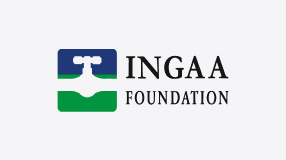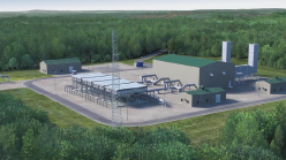Over the past decade perhaps no external factor has influenced the energy industry more than technology. From the wide spread use of automated real-time telemetry to using the Internet to conduct daily operations such as nominations, scheduling and invoicing, technology has drastically changed the way and the speed in which we conduct business. As the energy industry is the recipient of technologies and technology models that have been implemented and proven in other industries, such is the case with e-procurement. E-procurement for the purposes of this survey and discussion is the use of technology to augment the procurement process in the pipeline industry. This may range from simply connecting supplier and purchaser accounting systems to full-scale automation of the entire industry’s procurement process via e-catalogs and on-line marketplaces. It does not necessarily mean that the old business model and the inherent relationships that are contained in the old model are discarded and replaced. It simply means the introduction of technology into the process to bring about new efficiencies and savings for both the supplier and the purchaser of goods and services. In other words, it is an introduction of technology that is usually a coordinated effort between both the supplier and purchaser and includes some level of industry standardization.
To gauge where e-procurement was in the pipeline industry, the INGAA Foundation asked PricewaterhouseCoopers to determine the following:
1. In general through surveying the industry participants, what is the perceived impact of e-business and specifically e-procurement in the pipeline industry, if any?
2. What is the timing of the impact?
3. What role, if any, could INGAA assume to assist the industry?
Based on the responses received from the industry participants, our conclusions are summarized in this section. In order to bring to light specific trends and important conclusions, we have grouped our conclusions according to specific areas. The specific survey questions and the responses can be viewed in the sections following this summary.
Knowledge/Experience – In the survey, companies were asked to specify their company’s level of experience regarding both e-business and e-procurement. They were also requested to describe the initiatives they have already undertaken or planned to implement. Based on the results, it appears that the majority of companies have a basic understanding of both e-business and e-procurement, but only a small number are actually developing tactical plans for implementation. This leads us to believe that e-procurement is still in the very early stage of development within the industry with the majority of companies still assessing the impact of e-procurement on their business and attempting to determine the benefits that may be realized. Because of the fact that no one company(ies) in the pipeline industry has ran ahead of the rest of the pack in regards to developing an integrated e-procurement strategy, there is still time for companies across this industry to work together on a standardized e-procurement model.
E-Business and E-Procurement Initiatives – Similar to the question above, companies were asked to describe the initiatives already undertaken or the initiatives that are planned. Since knowledge and experience is still relatively low across the industry, most companies described their initiatives mostly as assessment type projects – how will e-procurement affect them and related strategy projects – how do I go about assessing e-procurement opportunities and what initiatives fit my overall business plan. There was evidence that some companies may be attempting initiatives without first developing an overall strategy, and a larger number of companies who did not believe that the initiatives were linked to any specific business strategy or objective. To be successful, all participants will need strategies linked to business objectives and finally, performance measures to gauge the success of their initiatives.
Industry Roles – For this discussion, industry roles are made up of two areas, the participant’s roles in managing any e-procurement initiatives and INGAA’s role. These will be discussed separately.
The participants appeared strongly divided over who should manage and operate a standardized e-procurement marketplace. The majority of pipeline companies believe a neutral third party should operate the marketplace while the suppliers believe themselves or a hybrid (buyer/seller/third-party) company should conduct the daily operations. This also has been noted in other industries as the model. Generally, suppliers initially feel the most threatened by e-procurement and therefore wish to be actively involved in any industry-wide initiative in order to protect their interest. Purchasers on the other hand view themselves as receiving the most benefits and believe as customers, they should be able to receive the services without active participation. Initially this is common across other industries. However, as knowledge and experience increase and the purchasers and suppliers work together to standardize, develop and implement solutions, roles become less of an issue and are easily resolved.
Regarding INGAA playing a role in the industry e-procurement model, the respondents agreed on INGAA’s role as facilitation versus operation. They expressed a strong desire to leverage INGAA to bring the purchasers and suppliers together to standardize the products and services that can be traded and to assist with the overall security processes that will be required. INGAA as a neutral party could play a leading role in bringing e-procurement to the pipeline industry and assisting each supplier and purchaser in realizing the benefits.
Products/Services – By a strong majority, the respondents believe that standard direct materials (valves, meters, orifice plates, etc.) and standardized parts were good candidates for e-procurement. They saw less of an opportunity for complex, highly customizable products and services, such as engineering construction services. However, with the large number of products and services that are being bought and sold in the industry, most companies generally appeared slightly uncertain as to which products and services should be traded and which should not be traded. This underlines the need for standardization and agreement by all parties on the scope of an e-procurement initiative in the pipeline industry.
Industry Impact – Overwhelmingly the respondents believe e-procurement would impact the industry in the short to medium timeframe, 1-3 years. The severity of the impact e-procurement will have on the industry is divided across the company types. Sellers feel that they are going to be impacted the most with a strong number believing that e-procurement will have an extreme impact on their business. In addition the majority of the other companies (non-suppliers) see a high to moderate impact on their businesses.
The majority of respondents view e-procurement as changing the relationships between the buyer and seller, but not necessarily the business model. This adds support to why the suppliers feel extreme change will be required. Many suppliers view their purchaser relationships as large competitive assets. If e-procurement diminishes this asset in any way, extreme changes may be required if competitive advantages are to be maintained.
Benefits – Suppliers viewed themselves as being required to undertake extreme changes in their organizations while the majority of all the companies responding to the survey believe that the pipeline companies will see most of the benefits that e-procurement brings. As seen in other industries, this is likely due to the overall inexperience and lack of knowledge of e-procurement currently in the industry. Initially, most suppliers see e-procurement mainly as an attempt to drive down costs without an even distribution of benefits across all participants; however, for an initiative to be implemented, both suppliers and purchasers must be part of the solution together. No single group can implement a solution alone. In our experience, as standardization moves forward in the industry and companies begin to collaborate around solutions, all groups begin to realize the benefits of e-procurement. If this cannot be achieved, then solutions generally do not get implemented.
Next Steps – As the industry prepares for the implementation of e-procurement, a series of steps needs to be to followed to allow for an orderly progression of events. Pipelines and pipeline suppliers are starting to develop e-procurement models and modifying their business practices accordingly. Coordination at the beginning stages of these modifications will prevent the need for future changes if the models are significantly different. PricewaterhouseCoopers proposed the following next steps for INGAA to assist the industry developing e-procurement standards.
- Define products, services and parts that are candidates for being handled through an on-line e-procurement process
- Find costs in the existing procurement systems that are the result of system inefficiencies
- Define information that could be shared to help the industry as a whole plan better without violating anti-trust laws





